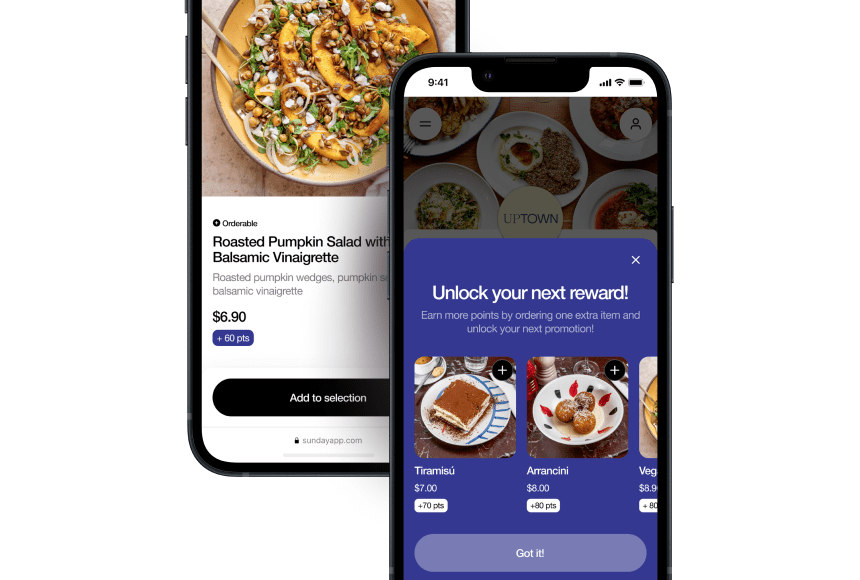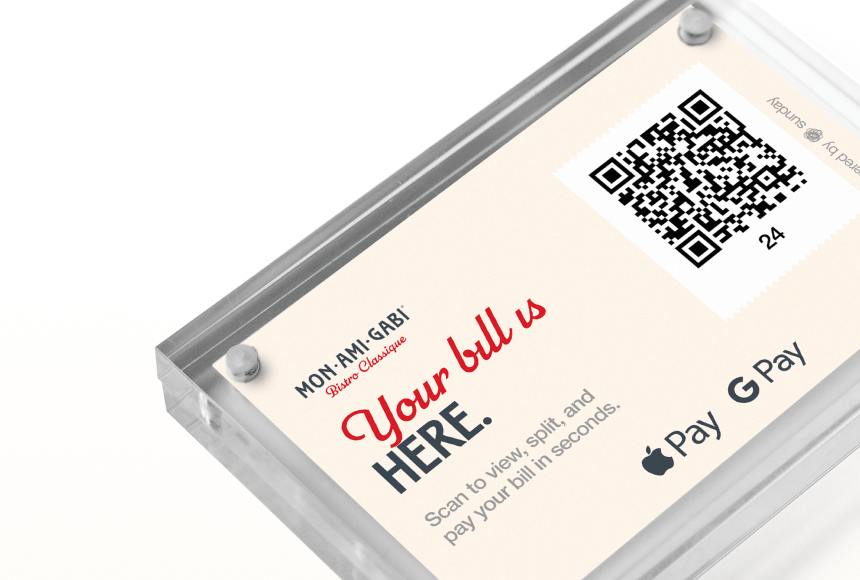
Are You Losing Hard-Earned Gratuities with the Wrong Payment Terminal?
Why the Right Payment Terminal Matters to Your Restaurant’s Success
Picture this: a satisfied guest finishes their meal and is ready to settle the check. They’re in a great mood—perhaps they loved the special you ran for the evening, enjoyed a friendly chat with their server, and are generally impressed. Now it’s tip time. Unfortunately, your card machine has a clunky interface, or maybe the screen defaults to low-tip options. That means the guest’s enthusiasm starts to drop, and they select a smaller tip than they initially intended—or skip tipping altogether. While a few cents might not sound alarming, it can add up to a significant amount across weeks, and even years.
In a highly competitive market, every detail can affect the bottom line. Your payment terminal, or “card machine,” is no exception. Many restaurant owners focus on menu price strategies, marketing campaigns, and seasonal dishes, while overlooking the subtle but powerful influence of the payment experience on tipping behavior. A smoothly executed payment process can elevate your guests’ perception of service—and therefore boost your servers’ tips.
The Tipping Culture: A US Tradition That’s Changing
In the United States, tipping has long been an important source of income for servers. According to the National Restaurant Association, more than half of a server’s total earnings can come from tips, making them essential in staff retention and satisfaction. Even though tipping customs differ from region to region and from one generation to another, the general idea remains consistent: diners reward the quality of service with a monetary gesture.
However, it’s no secret that consumer behavior continues to evolve. Today’s customers expect transparency and convenience in every interaction, from ordering dinner to paying for it. They want multiple options—credit, debit, contactless, mobile payment, or even scanning a QR code—and they appreciate smooth and quick transactions. If your card machine is slow, confusing, or outdated, it interrupts that seamless flow and can subtly discourage gratuities.
Case Study: The Tale of Maggie’s Diner
Let’s explore a fictional story—the day-to-day operations at Maggie’s Diner, a cozy spot specializing in big breakfasts and homemade pies. Maggie wants to keep things old-fashioned when it comes to décor and ambiance. Unlike her retro booths and neon signs—which her customers love—her payment system is technology from 15 years ago. The outdated device can’t accept contactless payments and requires multiple steps before the customer even sees the tip screen. Maggie has noticed a troubling trend: her servers keep mentioning their tips are declining, even though business is steady.
Upon closer inspection, Maggie observes that the payment terminal often leaves customers feeling hurried or confused. The screen for adding a tip is buried under several prompts. Some guests skip it by mistake. Others find the default tip options too low, and if they want to adjust, they must press multiple buttons. The friction in the experience leads to smaller or no tips—and customers might feel awkward, too. Maggie’s story might sound extreme, but it highlights a growing issue for many independent restaurants, especially if they haven’t updated their payment technology in a while.
Examining the Real Cost: Is Your Payment Terminal Eating into Gratuities?
When customers leave less-than-expected tips, it doesn’t just hurt your servers. It can also dampen morale, encourage staff turnover, and create a less positive environment within your restaurant. Over time, your workforce might start seeking workplaces with better, more modern tools or more generous tipping patterns. Remember, the cost of training and onboarding new staff can exceed the cost of upgrading your card machine or refining your payment process. Consider these hidden risks:
- Staff Turnover: Servers might seek other establishments where tipping is more straightforward and more lucrative.
- Customer Frustration: An outdated or confusing interface can leave diners irritated, and they may not return.
- Brand Damage: Negative online reviews or word-of-mouth complaints about frustrating payment experiences can hurt your reputation.
- Lost Opportunities: If your terminal can’t accept various payment methods (like contactless or mobile wallet), you might lose future business.
Yes, the direct costs (like processing fees) matter, but so do indirect ones you might not have noticed. Could it be that an extra $1 or $2 from each customer is going missing? Over a month, that can mean hundreds in lost tips. Over a year, potentially thousands.
Technology’s Role in Encouraging Generous Tips
Not all payment terminals are created equal. A well-designed one can gently “nudge” customers toward standard or higher tip amounts. The tip prompts can be displayed as percentages—such as 15%, 20%, or 25%—allowing diners to quickly hit a button rather than do mental math. Even the layout of buttons and the phrase “Thank you for your tip!” on the screen can foster a sense of gratitude and generosity.
Here’s where technology can shine. Imagine a sleek portable device (or a QR code payment process) that’s easy to hand over—or not even required if guests can pay using their phone. The flow might look like this:
- The server drops off the check.
- The guest scans a QR code or uses a modern handheld device.
- The screen automatically displays a friendly tip prompt, something like, “Thanks for dining with us! Would you like to add a tip?” with clear and easy percentage buttons.
- After tipping, the guest taps “Pay Now,” sees a confirmation, and the server is notified.
This entire interaction can happen in less time than it takes to open a creaky cash drawer. More importantly, it’s friendly and personal. The user interface does the heavy lifting: no guesswork, no awkwardness, no repeated button pushes. This frictionless approach often leads to more frequent and higher tips.
Impact of User Experience on Guest Satisfaction
Guest satisfaction is integrally linked to the payment experience. If your restaurant keeps up with your customers’ preferences—something as simple as letting them choose to pay by QR code or contactless swipe—then you’re making them feel respected and comfortable. According to a Forbes article on contactless payments, nearly 51% of Americans already prefer tap-and-go transactions, a number that has grown steadily over the last few years. Dial-up speed or multiple prompts can quickly drive them away from leaving a generous gratuity.
Every small step in that transaction process is a chance to either delight or frustrate a customer. An outdated card machine that’s slow to authorize or has an unintuitive interface can overshadow the warmth and attention you provided during the meal. A dinners that left raving about your cuisine might become mildly annoyed by a complex tip screen, overshadowing the entire experience. Conversely, a smooth user-friendly payment system can reinforce the positive memories from the meal—encouraging that last gesture of thanks in the shape of a tip.
How to Audit Your Current Payment Terminal
Before taking any decisive action, it pays to look at what you already have. Whether you’re running a small café or a bustling fine-dining spot, consider testing your own system as though you were a customer. Follow the steps to pay for a meal, from scanning or swiping a card to leaving a tip. Take note of each friction point. Here’s an easy audit checklist:
- Speed: How many seconds does it take to process the payment?
- Clarity: Are the tip options displayed in a clear manner (percentages or fixed amounts)?
- Personalization: Can the system incorporate a short thank-you message or ask for feedback?
- Accessibility: Is the screen big enough and bright enough? Is it easy for a guest with poor vision to navigate?
- Payment Options: Does your terminal accommodate contactless, mobile wallet, chip, and swipe seamlessly?
- Integration: Does it tie into your restaurant’s POS system smoothly, or is reconciliation a nightmare?
By examining these points, you’ll gain a clearer picture of whether your current solution is truly delivering the best experience possible—and if not, how badly it might be hurting your staff’s tips.
Modernizing the Payment Experience: Practical Tips
Upgrading your hardware—whether you use countertop devices, handheld card machines, or QR codes—can drastically improve the tip flow. Restaurants that have already made the switch often see an uptick in tip percentages, staff morale, and overall guest satisfaction. Here’s how you can level up:
- Go Portable: Handheld devices allow servers to bring the payment experience tableside. No walking back and forth, no confusion—just a quick tip screen right at the customer’s seat.
- Enable QR Codes: Let your guests scan a QR code to open the bill, select a tip, and pay almost instantly. It’s easy, discreet, and quick.
- Use Smart Default Tips: Include standard tip percentages of 15%, 20%, and 25% as defaults. This simple preset often increases the average tip amount.
- Include Friendly Prompts: Short messages such as “Your tip supports our staff—thank you!” can spark a more generous gesture.
- Train Your Staff: Even the best technology falls flat if your team doesn’t know how to introduce it to guests effectively. Encourage them to highlight convenience features and tip prompts with a friendly attitude.
Of course, any investment requires a bit of research and number crunching. But over time, the increased tips can boost server satisfaction, and your restaurant might see a surge in positive reviews as well.
A Quick Comparison Table: Outdated vs. Modern Payment Terminals
| Feature | Outdated Terminal | Modern Terminal |
|---|---|---|
| Payment Speed | Slow or requires multiple steps | Fast, often near-instant authorization |
| Tip Prompts | Buried or absent | Clear, with preselected tip amounts |
| User Experience | Confusing and clunky | Intuitive, user-friendly interface |
| Payment Methods Accepted | Limited (maybe just swipe/chip) | Wide range (contactless, mobile wallets, QR codes) |
| Impact on Tips | Lower tips due to friction | Higher tips from seamless flow |
Real-World Numbers to Back It Up
Data doesn’t lie. Some restaurant owners report a 15% or more increase in total tips after modernizing their card machines. Staff members, motivated by better returns, adopt a friendlier or more proactive approach, resulting in an upswing in positive feedback online. While figures will vary depending on location, concept, and customer demographics, a consistently user-friendly payment experience generally encourages generosity in tipping.
Additionally, improvements in the payment experience can elevate your rating on platforms like Google Reviews or Yelp. When a customer sees how easy it is to settle their bill—and how communicative your staff is during the process—it stands out, especially compared to restaurants where paying feels like a chore. Some systems even prompt guests to post a review immediately after paying, capturing their positive mood on the spot.
How sunday Fits into the Picture
While not every restaurant is ready for radical change, solutions like sunday can streamline the entire payment experience. sunday’s QR code system lets diners pay from their seat quickly, tip with just a few taps, and even post a Google review before they leave. This approach offers the best of both worlds: your staff gets to do what they do best—taking care of guests—while the technology handles calculations, tip prompts, and a frictionless checkout process.
Perhaps you’re worried about losing the personal touch of a face-to-face transaction. The good news is that your staff can still interact warmly with guests at every stage of the meal. Meanwhile, a quick on-phone payment means the guest never stands at the host stand, waiting for a card slip. Instead, they remain at the table until they’re done, creating more time for goodbyes, personal appreciation, and those little final touches that keep guests coming back.
Addressing Cost Concerns About Upgrading
The natural question remains: how much will modernizing cost, and is it worth it? Payment terminals do require set-up fees or monthly plans, but you need to weigh that against the potential gain in tips and guest satisfaction. If your staff is losing hundreds of dollars per month due to an inefficient system, you might recoup upgrade costs faster than you think.
Even a minor increase in tips per table—say, going from an average of 16% to 18%—can add up significantly if you do high-volume business. Plus, your staff will see the difference right away. They’re likely to embrace new technology if it means a better bottom line for them. And that, in turn, can mean less turnover for you, a huge savings in the long run.
The Gentle Approach to Rolling Out New Tech
Introducing a new payment system shouldn’t feel like forcing staff and customers into unfamiliar territory. Here are some tips for a smooth rollout:
- Involve Employees Early: Let them test the device, offer feedback, and understand how it can boost their tips.
- Offer Quick Tutorials: A short video or a fun in-house session can teach them how to operate the new system efficiently.
- Give Guests a Heads-Up: Place small signs on the table or mention it on your menu: “We now offer a quicker, simpler digital payment option!”
- Ask for Feedback: Encourage your regulars to share their thoughts. If they love it, they’ll happily talk about it to friends and family.
- Stay Flexible: You can keep older payment methods on hand for those reluctant to change, but gradually promote the new approach.
A measured approach ensures you don’t alienate people who resist technological change while embracing those who are ready for an upgrade. In many cases, the majority of customers quickly adapt, especially if it saves them time and energy.
Your Next Steps for Protecting Staff Tips
After reading all of these points, you might be wondering exactly what to do next. If you’re convinced your card machine could be costing you tips, here’s your action plan:
- Conduct a Payment Experience Audit: Evaluate speed, interface, tip prompts, and user experience.
- Check Feedback: Talk to your servers and loyal customers. Ask them about friction points.
- Explore Modern Solutions: Identify devices and platforms—like sunday—that align with your restaurant’s brand and budget.
- Pilot and Train: Start with one or two terminals (or a QR code approach) and perfect the process with your staff.
- Celebrate Improvements: Note any increase in tips or customer satisfaction, and share those wins with your team.
FAQ: Common Questions About Upgrading Payment Terminals
Is upgrading a payment terminal expensive for a small restaurant?
Costs vary, but many modern card machine or QR-based solutions come with competitive pricing plans designed for independent operations. If you factor in potential tip increases, staff retention, and customer satisfaction, the change often pays for itself.
Do customers like new payment technologies, or will they miss the traditional card swipe?
Most guests appreciate smoother, faster processes, especially if you maintain a warm, personal atmosphere. You can still let them swipe a card if they prefer; offering multiple options usually makes everyone happy.
What if my staff resists new technology?
Involve your team early, provide hands-on training, and highlight how these changes can lead to higher tips and happier guests. Once they see the benefits, most servers adapt quickly.
Isn’t QR code tipping impersonal?
Not necessarily. A short, friendly statement on the payment screen—like “Thank you! We appreciate your support”—can add a personal touch. Your servers still handle the meal service and interact with guests; the technology simply streamlines the final step.
What if I only have a handful of tables and a more casual setup?
Even smaller restaurants can gain from modern payment solutions. Streamlining the tip process saves time for both servers and guests, helps you stand out, and can boost loyalty among your customers.
From staff satisfaction to improved online reviews, the evidence is clear: your card machine can either be a prime asset in generating tips or a silent drain on gratuities. By auditing your current solution, embracing intuitive interfaces, and making the most of today’s innovations, you’ll equip your restaurant to thrive in a rapidly changing market. And your team—and their tip jars—will thank you every step of the way.
Find out more today
Drop us your details below and we’ll reach out within the next 24h
More tips means a better service.
More tips mean better guest-experience, and better staff-retention.




